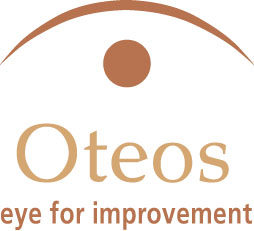The other day I saw a quote pop up on Linkedin, If I recall correctly, it was one from Simon Sinek, and part of it said the following “life is beautiful because of the people we meet,” and I couldn’t agree more. So I try to squeeze the wave of thoughts that reading those words released in this little blog to tickle your minds. It is the people in our lives that give it meaning, make it valuable and worth living. Who else would you learn from, and who else would you share all your amazing experiences in life with. Can you imagine being all alone?
Basic Human Needs
Human beings are incredibly complicated and predictable at the same time. That’s what fascinates me about human behavior. Even though there are exceptions, the majority of our society uses the same strategies and patterns to make their everyday moves and decisions.
We all share a need for appreciation and acknowledgment, and we want to grow and develop. In addition, we all desire a level of certainty and security. Although people have the same basic needs, we all seek them in different ways, moments, levels, and forms. We look for them in other people or situations. In the end, we are still unique.
Appreciation and acknowledgment are something very delicate. But by saying good morning, you can never go wrong. Saying “good morning” tells people, “I see you and respect you.” Another common way to get appreciation and acknowledgment is the use of social media. We share parts of our personal journey through life, things that happen to us, and something we experience. In return, people share our stories, like them, or even love them. In some cases, it can lead to new jobs or opportunities.
Nothing replaces human contact. Even in the middle of a global pandemic, there is so much value in being able to look someone in the eyes or to share your smile when someone feels a little down or just as a token of appreciation.
Developing Relationships
You hear it everywhere around you, “We tend to get caught up in life” or “life goes by so fast.” It’s a summary that describes the urgency of valuable inter-human relationships. Meeting new people means getting to know new people. Something that is, of course, extra hard during the current Covid19-restrictions all over the world. Never the less we need to keep going; we need to be a little bit more creative and leave the well-worn paths.
The importance of getting to know people is very relevant to the work floor too. Knowing your staff is one of the most important things there is. Getting to know them takes time and effort. But if you are willing to invest that and you really listen to your employees, truly try to understand them, you can make a difference. Because when you know them, you know which buttons to push to coach them and guide them to become the best version of themselves under all circumstances.
The Tea Bags
People that know me know I’m not really a coffee drinker, but I will take a good cup of tea any time of the day! That brings me to a good story about the connecting value of a cup of tea. It was at the end of my first year working as a manager at GVB public transit in Amsterdam. Managing a team of tram drivers and service staff members in the city of Amsterdam came with challenges. My staff members were often on the road, moments of contact were often short and usually about their adventures during their rides (basically to let off some steam). These visits were important but too short to build a meaningful work relationship and to help get them out of their own heads during their busy schedules. Then I figured out the value of a teabag!
My favorite Dutch tea brand Pickwick is not just any teabag. They have a wide variety of amazing tea flavors, and no, I’m not (yet) sponsored for writing this in my blog. But what makes me an even bigger fan is the little label on the end of the string attached to the teabag because they contain questions. And I can hear you think what’s so exciting about those questions? Well, they make you feel; they are an amazing tool to connect to yourself and other people.
I remember putting the jar of teabag questions on my desk. I made this plan when staff members walked in to blow off some steam, ask a simple question, or just a visit, I would draw a question. The first person I asked laughed hard and told me she wasn’t going to answer the question. But she did ask me the question back. As I was answering, I was kind of disappointed, not knowing that two hours later, she would walk back into the office to answer it anyhow. I was happy and thought I was on to something. The value of this little teabag was more significant than I could ever imagine. It changed how I connected to my staff members in a natural human way and got them out of their busy work bubble.
Ironically enough, the labels on their corporate teabags don’t have the questions and just show their plain logo. A missed opportunity if you ask me because the work floor offers such an amazing stage for some good conversations. And it gave me, as a manager, an important tool to approach leadership from a different perspective opening my eyes, allowing me to connect with my staff members on a different level.
When did you connect with your team for the last time? What do you do to get to know your staff?



 three years. It wasn’t always toxic. In fact, it was one of the best places I had ever worked until management at three levels changed in rapid succession. When circumstances afforded me the opportunity, I finally left the organization. The choice came with an enormous amount of guilt – guilt that I was leaving the patients that meant so much to me, but even more was the guilt for the work-family that I left behind. I had spent the past two years fighting for my team at a cost to me professionally as well as mentally and emotionally. By the time I left the organization, I was damaged and truly felt like a failure. I was unable to successfully lead my team through some very difficult times and, after twenty years of service, felt like I had been dishonorably discharged without actually being fired. Feeling completely defeated and like I had let my work family down, I walked away.
three years. It wasn’t always toxic. In fact, it was one of the best places I had ever worked until management at three levels changed in rapid succession. When circumstances afforded me the opportunity, I finally left the organization. The choice came with an enormous amount of guilt – guilt that I was leaving the patients that meant so much to me, but even more was the guilt for the work-family that I left behind. I had spent the past two years fighting for my team at a cost to me professionally as well as mentally and emotionally. By the time I left the organization, I was damaged and truly felt like a failure. I was unable to successfully lead my team through some very difficult times and, after twenty years of service, felt like I had been dishonorably discharged without actually being fired. Feeling completely defeated and like I had let my work family down, I walked away.
